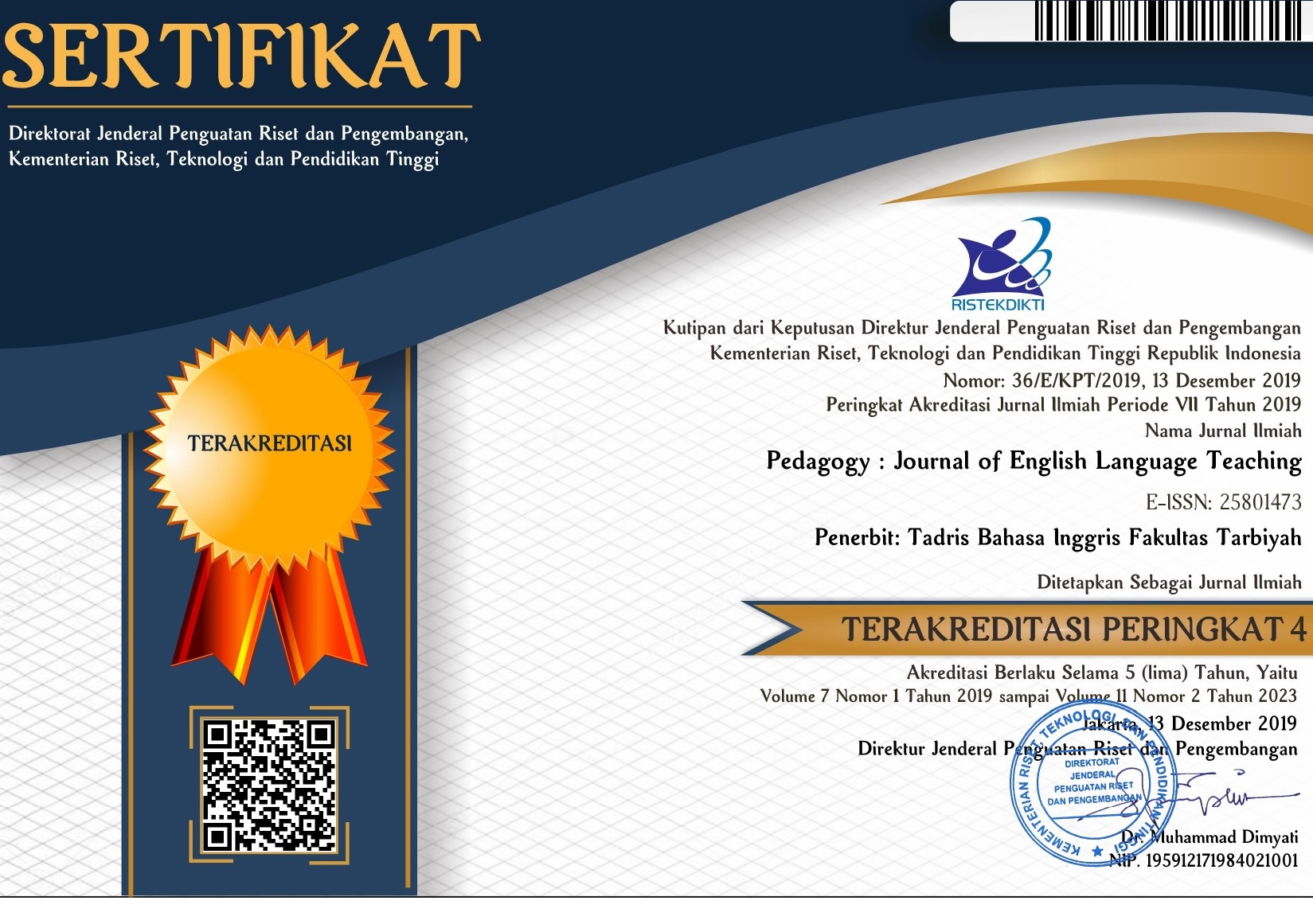Creative Teachers in Teaching Speaking Performance
DOI:
https://doi.org/10.32332/pedagogy.v7i2.1670Keywords:
Creativity, Creative teacher, Speaking PerformanceAbstract
Creativity has an important role in teaching process. However, the students’ achievement are not realeased by the role of creative teachers. This study aims at exploring some factors that used by creative teachers in teaching speaking performance. As media and strategies are the crucial factors that used by the teachers to help the students understand the material easily. The qualitative study was applied in this research. The technique of collecting the data was an interview, and questionnaire from the English teachers in five schools in Surabaya. This study found that there were some factors that influenced the creative teachers in teaching speaking performance such as (1) media usage: powerpoint presentation, chunks of familiar pictures, attention-grabbing pictures, music ball, and eye-catching cup as well as some online exercise links; (2) strategies election: by performing ball and cup moving, “boom” counting, guessing game, chained word game and listening comprehension taken from Google translate recording; (3) lesson plan; (4) organize the material. In conclusion, the creative teachers applied some factors in teaching speaking performance to enhancing students speaking performance.
References
Best, B., & Thomas, W. (2008b). The Creative Teaching & Learning Resource Book. (B. Best & W. Thomas, Eds.). New York: Continuum.
Freeman, D. L. (2000). Techniques and Principles in Language Teaching (Second). Oxford: Oxford University Press.
Khameis, M. (2006). Strategies to Promote Students ’ Speaking Skills. Fujairah.
Ko, J., Sammons, P., & Bakkum, L. (2016). Effective Teaching. Berkshire: Education Development Trust.
Kumaravadivelu, B. (2001). Toward a Postmethod Pedagogy. Tesol Quarterly, 35(4), 537–560.
Kumaravadivelu, B. (2003). Beyond Methods: Macrostrategies for Language Teaching. London: Yale University Press.
Maley, A., & Peachey, N. (2015). Creativity in the English Language Classroom. (A. Maley & N. Peachey, Eds.). London: British Council.
Marsland, B. (2009). Lessons from Nothing (13th ed.). Cambridge: University Press.
Piirto, J. (2011). Creativity for 21st Century Skills. Rotterdam: Sense Publishers.
Rinkevich, J. L. (2011). Creative Teaching : Why it Matters and Where to Begin Creative Teaching : Why it Matters, (October 2014), 37–41.
Saavedra, A. R., & Opfer, V. D. (2015). Learning 21st-Century Skills Requires 21st-Century Teaching. Kappan, 94(October 2012), 6.
Sale, D. (2015). Creative Teaching: An Evidence-Based Approach. (D. M. . Powers, Ed.). Singapore: Springer.
Starbuck, D. (2006). Creative Teaching. London: Continuum International Publishing Group.
Weinert, S., Schuth, E., & Judith, K. (2017). The Influence of Academic Vocabulary Knowledge on School Performance. Learning and Instruction, 49, 157–165.















